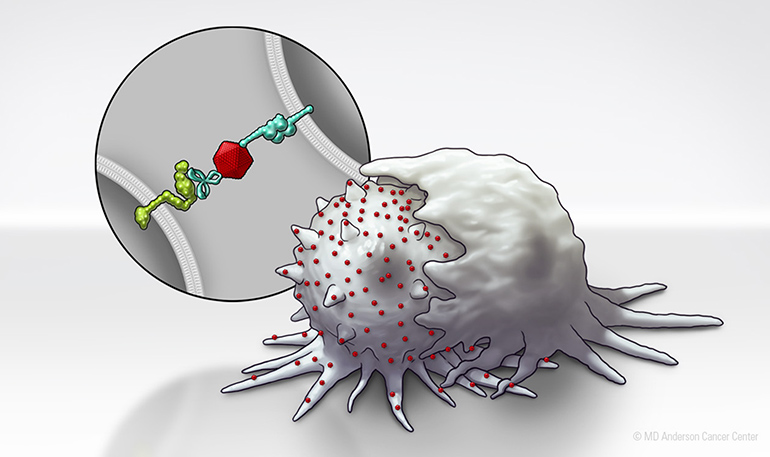Researchers at The University of Texas MD Anderson Cancer Center have developed a nanotechnology platform that can make cancer cells more vulnerable to immune attack in the body. The researchers call their system the bispecific tumor-transforming nanoconjugate (BiTN) platform.
The idea is to make solid tumors more appealing for the immune system by attaching a molecule that acts as an “eat me” signal to white blood cells. This molecule is called signaling lymphocytic activation molecule family member 7 (SLAMF7) receptor and is more commonly found on cancer cells in blood cancers, which explains the relative success of existing immune therapies in these cancer types. Solid tumors are not typically as susceptible to the immune system, so these researchers decided to make them more appealing by attaching SLAMF7 to their surface.
Immunotherapies have changed the way that many cancers are treated. There is something pleasing about activating our own immune system to attack a cancer, and it may avoid the need to administer large doses of toxic chemotherapy drugs that can have a wide spectrum of unacceptable side-effects. Our immune cells can be highly effective at sniffing out and destroying cancer cells, but in some instances they may need a little help to identify the tumor.
In the case of blood cancers, such as leukemia and lymphoma, immune therapies are often relatively successful. In part, this is because these cancers tend to express SLAMF7 on their cell surfaces, and this is a key cue for the immune system to identify them as worthy of attack and acts as sweet honey for phagocytic white blood cells. In solid tumors, however, the efficacy of immune treatments tends to be more mixed, and there is a need to improve this.
These researchers have developed a nanotechnological system that can label solid tumor cells with SLAMF7, making them much tastier to white blood cells. The system is called bispecific tumour-transforming nanoconjugate (BiTN) platform, and it consists of a tumour-specific antibody that is conjugated with SLAMF7.

To date, the researchers have conjugated SLAMF7 with a HER2-recognizing antibody to target HER2-positive breast cancer cells, and showed that following this labelling, the cells were much more likely to be attacked and phagocytosed by immune cells. The nanotechnology platform can also be rapidly adapted to target other tumor types, simply by changing the targeting antibody present in the system.
“With this new platform, we now have a strategy to convert a solid tumor, at least immunologically, to resemble a hematological tumor, which often has a much higher response rate to immunotherapy treatments,” said Wen Jiang, a researcher involved in the study . “If we are able to translate and validate this approach in the clinic, it may enable us to get closer to the maximum level of activity from immunotherapy drugs with cancers that have not traditionally responded well.”
Study in Nature Nanotechnology: Immunological conversion of solid tumors using a bispecific nanobioconjugate for cancer immunotherapy
